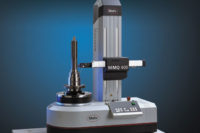Quality professionals are employed by companies that are making money. According to respondents from Quality’s 13th annual State of the Profession Survey, the median company revenue for 2012 was $34 million. And 16% of respondents said their companies had revenues of $1 billion or more.
Whether you work at a billion dollar company or one that has yet to make its first million, there’s no doubt quality is important. Our annual survey offers insights into the quality field, including salaries, job satisfaction, quality improvements, and a demographic overview of industry professionals.
Manufacturing Industries
Let’s look at the industries our respondents came from. The largest group was primarily involved in manufacturing fabricated product metal at 15%, followed by aerospace products and parts at 11%, and plastics and rubber products at 10%. Medical equipment and supplies came in at 9%; followed by computer and electronic product; machinery manufacturing; and motor vehicle body, trailer and parts. Other industries mentioned included electrical equipment, energy, primary metal, navigation, and other transportation.
Forty-three percent of respondents worked at an original equipment manufacturer, 31% at a components or parts manufacturer, 17% at a job shop, and the remaining percent fit into the catch-all Other category, which included responses such as distributor or contract manufacturer, raw material, and consulting.
Revenues and Resources
Forty-six percent of respondents worked at a company with an estimated 2012 annual company revenue between ten million and 99 million. The mean annual company revenue was $566.4 million. The median was $34 million.
The mean company size (including all locations) was 12,515 employees, and the median was 250 employees. Thirty-two percent of respondents worked at a company of less than 100 employees, and 30% worked at a company of between 100 and 500 employees.
For about half of respondents (49%), the staff size of the quality operations has remained the same. For 39%, it increased, and for 12% it decreased during the past year.
The quality department has the primary responsibility for purchases in the quality process at 53% of companies, executive management for 16% of companies, and manufacturing operations/production at 9% of companies. A few respondents also said that it depends on the group, and that there are shared responsibilities with management.
The involvement in the purchase process varies, with 97% of respondents having some involvement. Thirty-one percent said their primary role is to determine a need, 28% said to approve a purchase, and 23% said they primarily recommended brands or models. Only 3% said they had no involvement.
Resources committed to quality were expected to stay the same at 52% of companies, to increase at 41%, and to decrease at only 7% of companies during the next year.
Of those, gages were a top resource investment. Fifty-six percent of respondents expected an increase in gages (including air, bore, thickness, thread etc.), while 33% predicted more investment in measurement software, and 29% in coordinate measuring machines. The list also included measurement equipment for form/geometric, laser, video, and surface finish. Optical comparators, measuring microscopes, gear measurement and shaft measurement equipment, and structured/white light were also mentioned.
When looking into new technology, the largest group of respondents (42%) said their companies wait until others have successfully used it. Thirty-six percent said their company is willing to be one of the early adopters.
Production Around the World
About half of respondents said they only produce in the United States, and the other half has production around the world. The average number of countries of production is four.
Thirty-one percent produce in China, 28% in Mexico, and 20% in Brazil.
Respondents also have production facilities in Germany, Canada, India, the United Kingdom, Japan, France, Italy, Australia, Taiwan, and Russia. Additional countries in the Middle East, Western and Eastern Europe, and Central and South America were also mentioned.
Employee Details
Forty-four percent of respondents said they worked in quality management, 17% in quality engineering, and 11% in an engineering/technical capacity. Respondents also worked in corporate management, manufacturing management/operations, manufacturing engineering, research & development, and purchasing.
And respondents have been at their current company for a mean of about 13 years, with 40% saying they had been with their current company between five and 15 years. Fifteen percent said they had been with their current company for more than 25 years. In terms of experience, 45% said they had 25 years of experience or more. The mean was 23 years.
Sixty-four percent said they had supervisory responsibility, and of those, 42% supervised fewer than five people. The mean number of people supervised was 14.
Forty-seven percent said they worked 40 to 45 hours a week on average, with the mean of 47 hours. (This is just under last year’s average of 48 hours.)
For 73%, this number hasn’t changed—they said they are working the same number of hours as last year. For 19%, this number has increased, and of those, the mean increase was seven hours. For the 8% that saw the number of hours worked decrease this year, the mean decrease was also seven hours.
Respondents expected that these numbers would stay roughly the same next year.
Quality-Related Responsibilities
Respondents said that their primary quality responsibilities included implementing solutions to problems (77%), interfacing with management (74%), document adherence to formal standards such as ISO (68%), dealing with suppliers (63%) and customers (62%), and continuing education and training (58%). Other responses included research new methods and technologies, supervise day-to-day operations, implement quality methodologies (such as Lean or Six Sigma), increase productivity, evaluate proposals from suppliers, and prepare and review budgets.
And the biggest barrier to getting things done? Time. Fifty-nine percent cited time constraints as their biggest constraint, followed by management support for 35%, and a skilled labor shortage at 31%. Other barriers listed included budget cutbacks, dealing with suppliers, new and existing standards, dealing with customers, information overload, integrating in-process measurement, keeping up with state-of-the-art technologies, making new technology work, global competition, and mergers and acquisitions.
Despite these challenges, overall job satisfaction remains high. Fifty-eight percent gave a high satisfaction rating with their job, 37% were moderately satisfied and rated their job between four and seven on a ten-point scale, and only 5% gave a low satisfaction score.
And job satisfaction doesn’t simply depend on money. More than half (51%) rated a feeling of accomplishment as one of most important attributes of their job, while 47% rated job security as one of the top two attributes to consider. They also valued the technical challenge (45%) and salary (40%). Other factors considered important were the ability to try new or creative approaches, a good relationship with colleagues, the chance to be a team leader, and a pleasant work environment.
The top job concern, however, was the economy. Fifty-five percent listed economic concerns as one of the top two attributes they worried about. This was followed by job security (45%) and management support (44%). Other concerns included were improving skills and quality of workforce, keeping current on regulations, a sufficient operating budget, outsourcing and privatization, keeping current on technology, a company merger or acquisition, and salary.
Salary and Benefits
Perhaps salary was not something quality professionals worried about because only 13% made less than $50,000. Thirty-six percent made between $50,000 and $74,999, 29% made between $75,000 and $99,999, and 17% made between $100,000 and $130,000. Only 6% made more than $130,000. The mean was $78,727, a boost from last year’s $75,781.
Sixty-percent of respondents received a bonus in the last twelve months, with the mean bonus coming out to $8,867.
Salaries increased for 57% of respondents from last year, remained the same for 39%, and decreased for only 4%. Of those who saw an increase, for 75%, this increase was less than 5%. The mean increase was 4%. (The decrease numbers did not have a sufficient sample size for analysis.)
The reason for the same salary? More than half (55%) said their salary had remained the same because of economic conditions, 34% cited budget constraints, and 33% said it was because no review was conducted. Twenty-six percent said it was because of a salary freeze, while 11% said they had reached the top pay level. Other reasons listed included lack of management support, too new at a company, their contract, and company policy.
Looking ahead, sixty-one percent of respondents expected a salary increase at their next performance review, 28% anticipated no change, and only 1% said they expected a decrease, while 10% do not have salary reviews.
A variety of factors could affect salary changes. Overall company performance was a top reason, mentioned by 76% of respondents. And personal performance was the next factor, with performance reviews cited by 68% of respondents. The overall operating performance of their own plant was cited by 57% of respondents. Meeting deadlines for new projects was mentioned by 40%, followed by meeting product quality requirements at certain volume or yield level by 32%, and maintaining standards (such as ISO) by 31%. Other potential salary changes were tied to leadership in implementing new quality technology, launching new products, effective use of existing test and measurement equipment, creating new inspection processes or revising existing ones, support-oriented tasks, and establishing a good network of suppliers. (And in a somewhat existential answer, four respondents replied that “nothing” causes changes in salary.)
While salary may be tied to performance of the company or employee, benefits usually are standard. Paid vacation came out as the top benefit (94%), followed closely by health insurance (92%). Other benefits included dental insurance (83%), 401(k) matching (79%), life insurance (78%), vision insurance (70%), tuition reimbursement (57%), on-the-job training (42%), flexible hours (33%), profit sharing (33%), pension (23%), stock purchase plan (23%), and childcare (4%). Only 1% said they received none of the benefits listed here.
In terms of changes in benefits, 75% expect that the amount they pay for health insurance premiums to increase, 20% predict no change, 1% predict a decrease, and 4% do not use company health insurance.
Training
Although 29% of respondents said they did not go through any training last year, the rest of the group received certifications in the last twelve months (32%); ISO, FDA and other regulatory standards (28%); methodologies such as Six Sigma (21%); management (20%); software or PC (20%); and equipment operation or repair (12%).
When asked about skills they would like to acquire in the next year, respondents had plenty of ideas. Certifications and problem-solving were each mentioned by 41% of respondents, time management by 30%, employee supervision by 16%, teamwork by 15%, public speaking and presentations by 14%, writing reports and proposals by 14%, and finance and accounting by 9%. Other mentions included a range of skills such as 3-D CAD, language, and even a Ph.D. It looks like a driven group. Only 6 respondents out of 281 said “none at this time.”
Demographics
The majority (89%) of respondents were male, with 51% between the ages of 50 and 59. The mean was 53 years old. Only 2% were younger than 29, and 3% were over 70.
The largest group of respondents (36%) had received a bachelor’s degree, followed by 23% with a master’s. High school was the highest education level for 15% of respondents, a certificate program for 12%, and an associate’s degree for 12%. Only 2% of respondents had achieved a Ph.D.
In terms of certificates, 27% had an ASQ certification, 18% had a Six Sigma Green Belt, 7% Black Belt, and 2% Master Black Belt. More than half (56%) had none of the above.
The bulk of respondents work in the Midwest (47%), followed by the South at 23% and the Northeast and the West each with 15%.
Methodology
The survey was sent to 19,530 active, qualified Quality subscribers, with a useable base of 18,773. The survey was fielded April 1-15, 2013. Three $100 American Express gift checks were sent to randomly selected recipients. BNP Media’s Market Research department received 281 useable returns, for a response rate of 2%.










